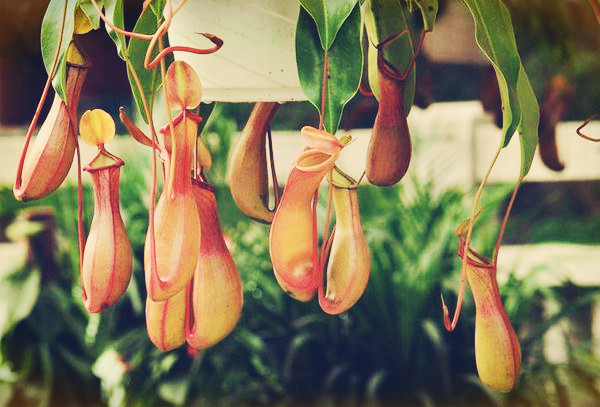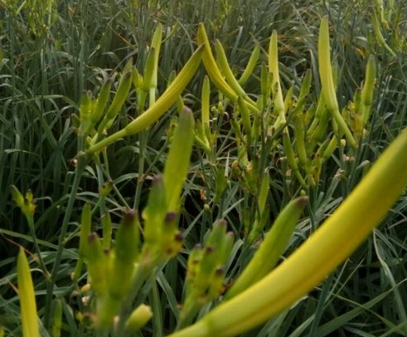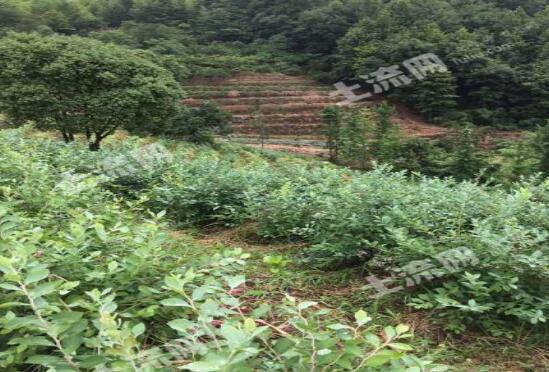Is the vase plant pitcher plant? What does it look like? How do you raise it?
In the countryside, there is a flower shaped like a bottle. Is it a pitcher plant? What does it look like? How do you raise it? Pitcher plant is the general name of all species of pitcher plant. It belongs to tropical insectivorous plants, and its origin is mainly in the tropics of the old world. It has a unique nutrient-absorbing organ-the insect cage, which is cylindrical in shape, the lower half is slightly inflated, and the mouth of the cage has a lid, so it is named because it is shaped like a pig cage. So vase grass is probably talking about pitcher plants.

What do you need to pay attention to when planting pitcher plants?
The main purpose of planting pitcher plant is to admire its peculiar insect-catching organ-insect cage.
1. Soil
The soil should be loose, fertile and breathable rotten leaf soil or peat soil. A mixed substrate of peat soil, water moss, charcoal and fir sawdust is often used in pots.
Second, watering
Pitcher plants are sensitive to water. Pitcher plants can only grow and develop normally under high humidity conditions. During the growing period, pitcher plants need to spray water frequently, 4 or 5 times a day. If the temperature changes greatly and is too dry, it will affect the formation of leaf cages.
Third, sunshine
The pitcher plant is an epiphytic plant, which often grows under the forest or on the north side of the rock. The natural condition is semi-shady. Under the strong light in summer, the leaves must be shaded, otherwise the leaves are easy to burn and directly affect the development of the leaf cage. However, under dark conditions for a long time, the leaf cage forms slowly and small, and the color of the cage surface is dim.
4. Temperature
The suitable temperature for the growth of pitcher plant is 2530 ℃, 2130 ℃ from March to September, and 1824 ℃ from September to March of the following year. The winter temperature was not lower than 16 ℃, the plants below 15 ℃ stopped growing, and the leaf edges suffered frost damage when the temperature was below 10 ℃.
5. Fertilization
Pitcher plants do not need special fertilization, because pitcher plants can usually feed on insects to transform nutrients, if pitcher plants have insects to eat, there is no need to apply fertilizer.
VI. Insect pests
Pitcher plants are often harmed by leaf spot disease and scale insects. Leaf spot disease was sprayed with 1000 times of 50% Dysen zinc wettable powder. The shell worm was sprayed with 2000 times of 40% dimethoate EC.
7. Pruning
The cage of pitcher plant is a kind of abnormal leaf, so it will age and die like the leaves of other plants. Generally speaking, each cage can survive for several months under suitable conditions. When it has withered, it can be cut off to make the whole plant look more beautiful, but this is purely for the sake of beauty and has nothing to do with the health of the plant.
Pitcher plant is a very magical plant, breeding at home believe that mosquitoes and other small insects will also be much less.
The flowers of pitcher plants have no ornamental value, they are small and flat, and only a few varieties of flowers are more bright. in addition, pitcher flowers also give off a bad smell, so try not to breed them indoors as much as possible. courtyard balcony is the best choice.
Pitcher plants are vines and must be attached in order to stand, so pitcher plants need to be supported. In order to set up the support, it is necessary to use larger flowerpots, on the other hand, larger flowerpots can hold more cultivation value, make the flowerpots stable and heavy, and can support large pitcher plants without being blown down by the wind.
Time: 2019-03-24 Click:
- Prev

How much is dried cauliflower 2018-2019 per jin? Is fresh day lily poisonous? What are the prospects for the planting market?
Cauliflower, also known as Golden Needle, Lemon Hemerocallis, is a kind of traditional vegetable that people like to eat. It has high nutritional value and is regarded as a treasure on the table. It is cultivated all over the north and south of our country, and it is harvested every spring and autumn. it has the edible effect of clearing heat and diuresis, detoxification and detumescence.
- Next

How big is the land area of Jindong District and Wucheng District of Jinhua City? What kind of plants are suitable for making money?
Jinhua, a prefecture-level city under the jurisdiction of Zhejiang Province, is bordered by Taizhou to the east, Lishui to the south, Quzhou to the west, Shaoxing and Hangzhou to the north. There are two municipal districts in Wucheng District and Jindong District, four county-level cities in Lanxi, Yiwu, Dongyang and Yongkang, and three counties in Wuyi County, Pujiang County and Panan County.
Related
- Fuxing push coffee new agricultural production and marketing class: lack of small-scale processing plants
- Jujube rice field leisure farm deep ploughing Yilan for five years to create a space for organic food and play
- Nongyu Farm-A trial of organic papaya for brave women with advanced technology
- Four points for attention in the prevention and control of diseases and insect pests of edible fungi
- How to add nutrient solution to Edible Fungi
- Is there any good way to control edible fungus mites?
- Open Inoculation Technology of Edible Fungi
- Is there any clever way to use fertilizer for edible fungus in winter?
- What agents are used to kill the pathogens of edible fungi in the mushroom shed?
- Rapid drying of Edible Fungi

